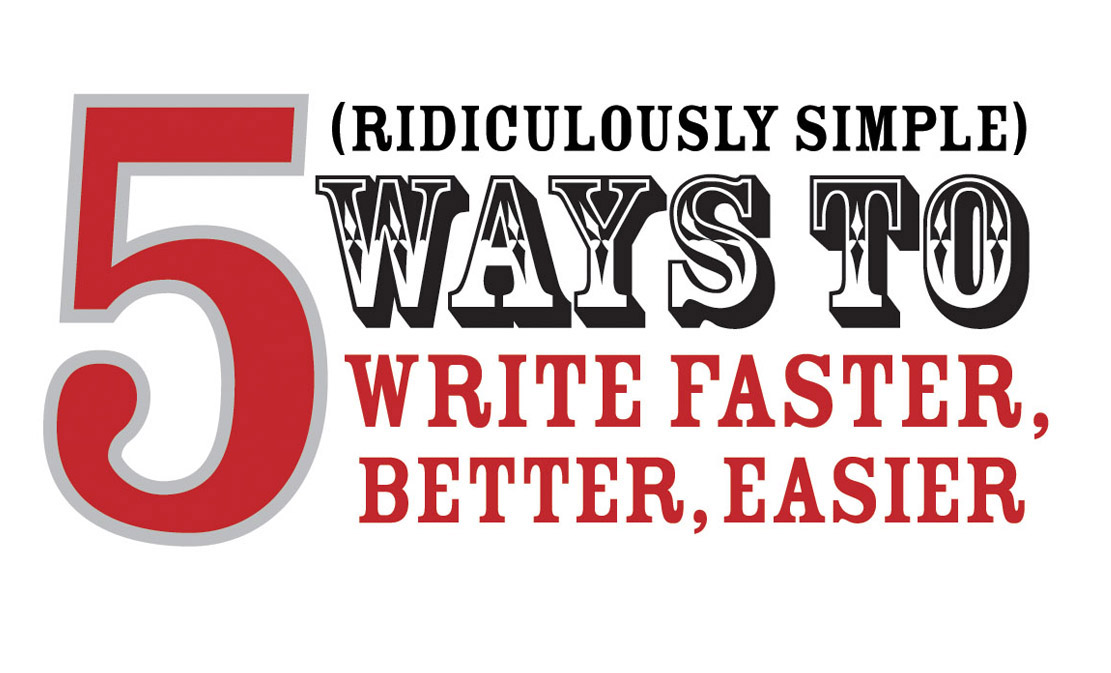Content Expert Interviews: A Time-Saving Writing System for Busy B2B Marketers (Part 3)
 Monday, February 24, 2014 at 09:33AM
Monday, February 24, 2014 at 09:33AM 
In Part 1 of this series, we covered the importance of having an interviewing/writing system in place to capture your content.
Part 2 covered how to create a dependable interviewing/writing system.
In Part 3, we’ll cover two important steps to take when preparing for the interview, including two checklists you can easily customize for your interviews.
Before we begin, let me ask you a simple question.
Do you know why most content interviews fail?
Most content interviews fail because of poor preparation.Here is what usually happens.
The interviewer tells the guest an interview is needed to gather some material for a project.
A date and time is set.
Everything is looking good.
Until things spin out of control during the interview.
The key to a successful interview begins with preparation.
You can better control the interview by:
1. Setting the context2. Explaining the interview process
1. Setting the context
The first step covers the basic areas:
- Project
- Audience (prospects, current customers, employees, etc.)
- Content platform (blog posts, podcasts, promotional e-books, etc.)
- Distribution (whether the audience has to sign up, call someone, etc.)
Add more areas as needed.
2. Explaining the interview process
People you interview may not have given an interview before. Or maybe they’ve given dozens of interviews. Either way, interviewees will have a series of questions like:
- How much do I have to say?
- What happens if I mess up?
- Will I be edited?
- Will I get the questions ahead of time?
To make your guest (and yourself) feel more comfortable during the interview, take 10 minutes before the interview to go over a few key ideas.
Here’s what I like to say to when prepping a guest:
1. “In general, the more you speak, the more material I have to work with. That means I can pick the best answers and highlight your expertise in the most meaningful way. If, on the other hand, you answer a question in just a sentence, the lack of material will make it hard for me to tell the story."2. I’ll then be more specific and tell them how much to say. For example, if there are eight questions to ask for a blog post, a 10-minute response for one question would result in an overwhelming amount of content to sort through later. A one-minute response would provide about the right amount of material.
3. Lastly, I’ll say: “If I ask you the same question twice, it doesn’t mean you messed up. It means I’m looking for further clarification on what you said, or I’m looking for you to say it in another way. This will provide me more editing options when writing the piece.”
Use the checklists below to help you and the interviewee stay on track.
Customize both checklists to fit your project needs.
Interviewee checklist
• Keep the context and our audience in mind.
• Write one sentence (or a short phrase) for each question in the outline I provided you. The goal is to have the sentence/phrase remind you what to say during our conversation—not to write everything down so you read it back verbatim.
• We’ll have a free-flowing conversation stressing one point per question.
• The interview should take about ------- minutes.
• Each question should take about ------- minutes to answer.
• I’ll make an audio recording of our interview so I have accurate notes to write from.
• Additional comments can always be added after the interview, eliminating the need to be “perfect” during the conversation.
• For telephone interviews, landlines are preferable to cell phones—the audio quality for recording is better.
• Feel free to call or email me (name) at (contact information) if you have questions.
Interviewer checklist
• Email your interviewee the list of questions.
• Thank the interviewee for volunteering their time to speak with you.
• Remind your guest to talk more rather than less. Having more information will make it easier to tell a story.
• Remember the audience, the context, and the goal.
• Have an outline and questions ready.
• Prepare for transcriptions ahead of time.
• Tell your guest not to memorize anything; it’s just a conversation.
• Thank your guest with a follow-up note.
The fourth and final part in this miniseries will cover a strategy many interviewers use to generate strong responses from guess. Stay tuned!
Know someone who would like this article?
Feel free to share it with your network.ThomasCliffordB2BCopywriter Google+ profile.
_______________________________________________________________________________________
Get your FREE 28-page e-book now
"Thomas Clifford has made something useful here. This report will give you some really catchy, useful ideas. It made me reconsider how I do what I do, so you might give it a look-see too!"
— Chris Brogan, President, Human Business Works
_______________________________________________________________________________________
When you subscribe for future blog updates, you’ll receive a professionally produced, gorgeously designed, 28-page e-book that will help you write faster, better and easier.
Here’s what you’ll discover:
- How to beat article chaos and stay organized (in just four steps)
- How to never run out of ideas—even when you’re up against the wall
- Why the “Whack-a-Mole Factor” prevents you from writing at your optimum speed
- The little known trick to writing faster that your teachers never told you about (but probably used themselves)
- How the 10-20-30 Principle can help even the busiest person find time to write
Just enter your email address at the top right of the page or click the button below.




Reader Comments